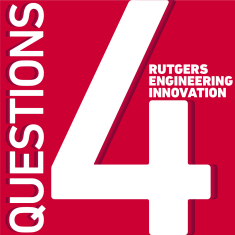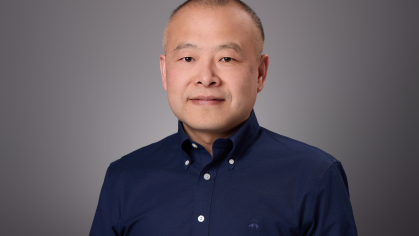Four Questions for Prof. Rajiv Malhotra: A Lasting Impact on How Things Are Made

After joining the Rutgers University School of Engineering faculty in 2017, assistant professor of mechanical engineering Rajiv Malhotra set up the Advanced Manufacturing Sciences Laboratory (AMSL). Since then, he has worked to improve and enhance manufacturing processes and product performance from the ground up together with the lab’s team of doctoral, masters, and undergraduate students.
While the pandemic has required Malhotra’s team to make adjustments with regard to proximity between students in the lab, work has continued with virtually no change in productivity. Current research focuses on novel scalable and damage-free techniques for fabricating structural electronics such as electrical circuits embedded in a 3D geometry inside 3D printed structures. When compared to current state-of-the-art methods, Malhotra’s method has the potential advantage of achieving parity in electronic performance with conventional 2D electronics.
He is a co-PI and recent recipient of a three year National Science Foundation Grant for a project exploring the “Seamless Additive Manufacturing of Electrical Circuits Inside Polymers for Multifunctional 3D Components.”
What sparked your interest in mechanical engineering and what led to your current research interests?
I’m passionate about the history and the long-term impact of applied sciences, which is what led me to my current research interests. I focus on science-based innovation to go beyond limitations of performance, cost, speed, and flexibility in state-of-the-art manufacturing. I believe that high risk-high reward paradigm shifts in manufacturing combined with translational efforts have the greatest potential for long lasting socio-economic impact.
What most excites and inspires you about your current research?
I’m excited about breaking endemic and hard-to-solve tradeoffs in manufacturing. We are developing breakthrough techniques for very large area 3D printing, 2D material processing, and plasma micromanufacturing that we hope will ultimately achieve this goal.
Who will most benefit from your research?
Manufacturing has a cross-cutting socio-economic impact. The applications of my current and developing research include heavy industries like aerospace and automotive; consumer products such as electronics and wearable devices; and biomedical devices.
How are students contributing to the work being done in your lab?
I’ve had high school and middle school students working in my lab since the beginning of my career. This engages younger students, and gives undergraduate and graduate students the opportunity to mentor – and feel that they are having a direct impact – on these younger minds. Once the pandemic ends, I definitely expect high school students to again be involved in my lab’s research.
As a teacher, I especially enjoy how my interaction with undergraduate students often leads to their participation in research. I heavily involve them in my work – and some of these students have even gone on to pursue their PhDs in my lab. Rutgers master’s and PhD students make foundational contributions to my research.


